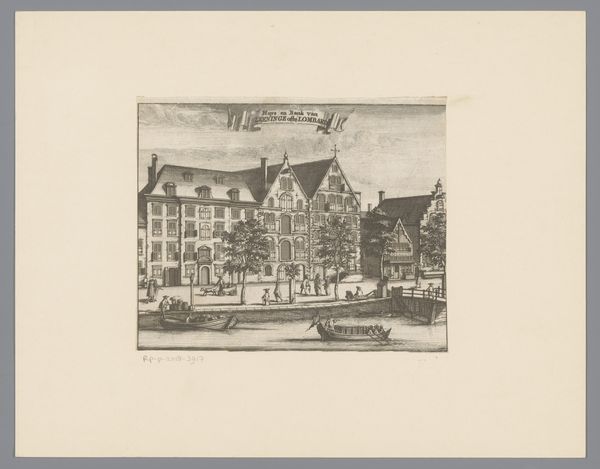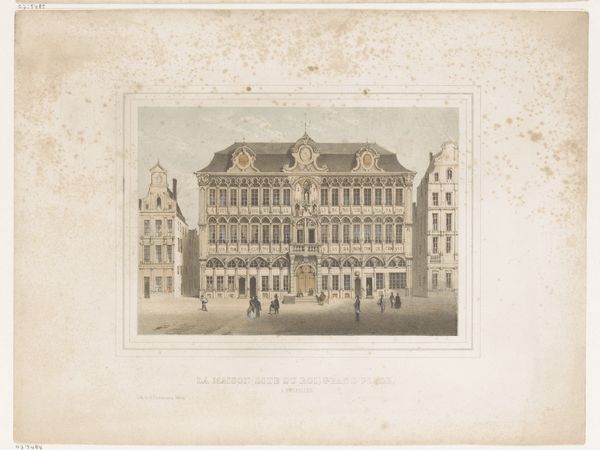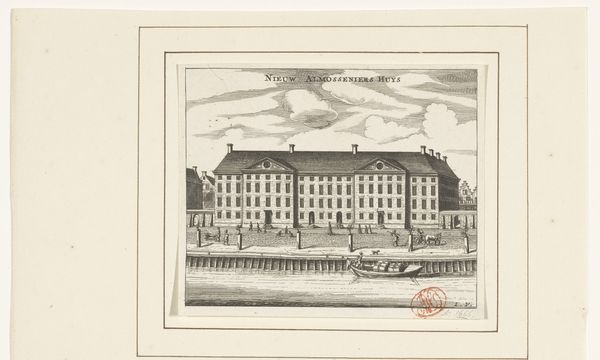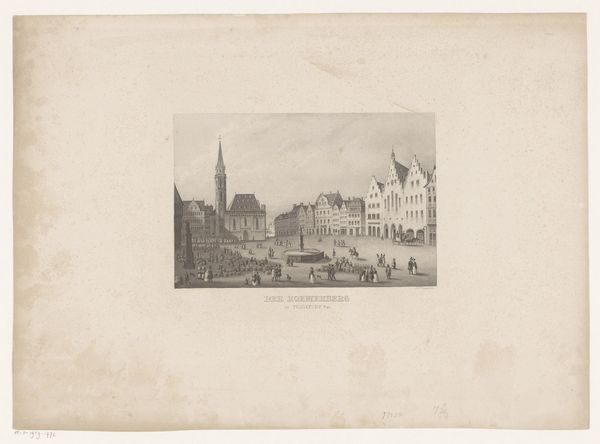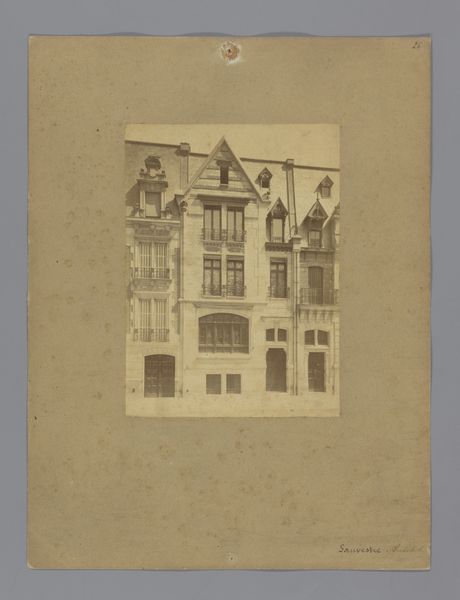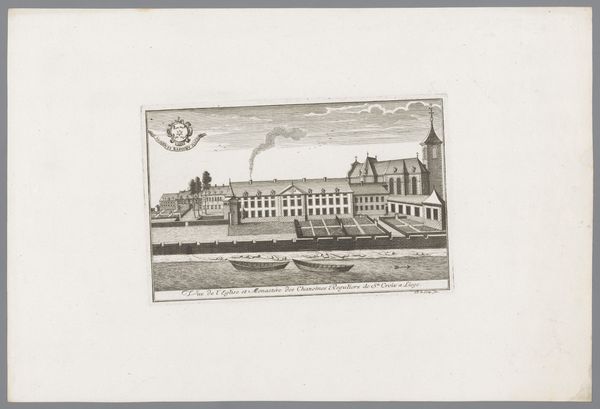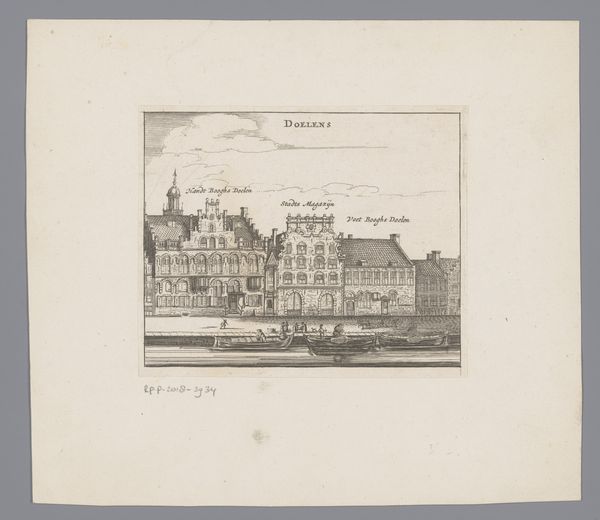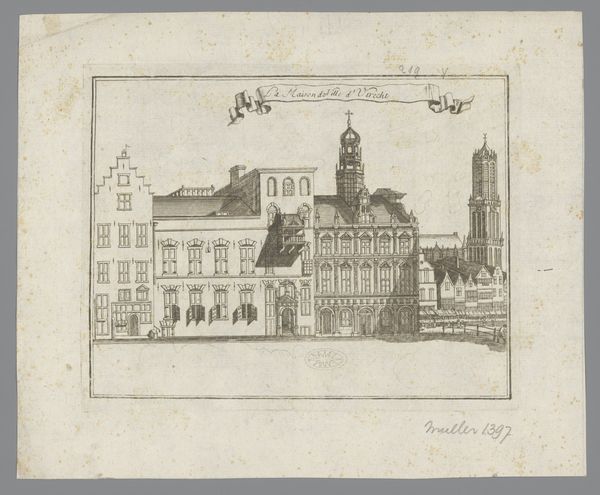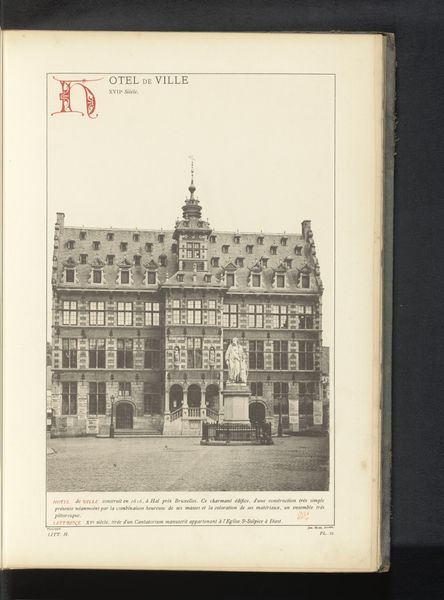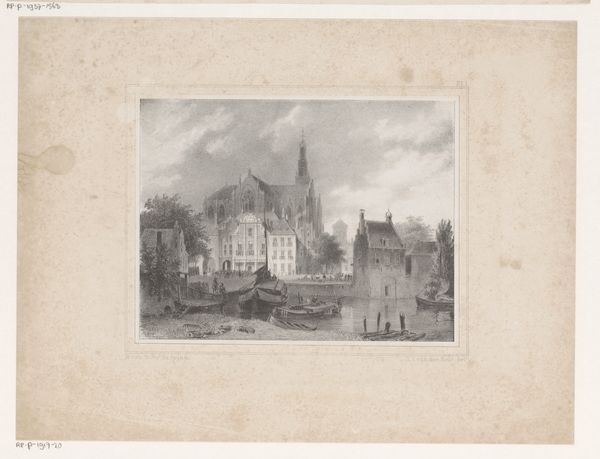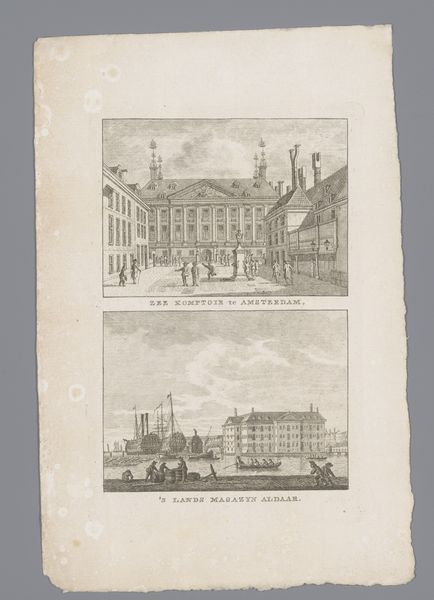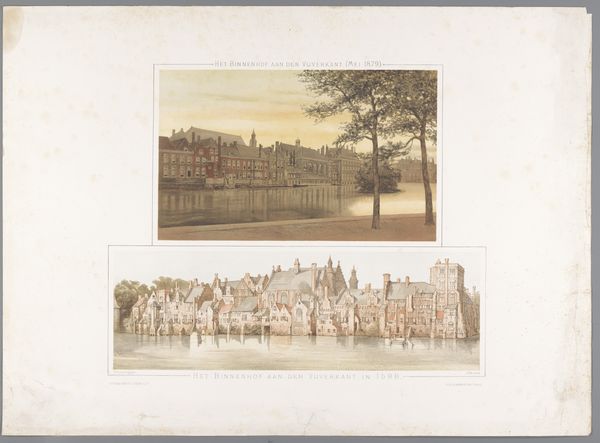
drawing, print, etching, architecture
#
drawing
#
baroque
#
dutch-golden-age
# print
#
etching
#
line
#
cityscape
#
architecture
Dimensions: height 115 mm, width 153 mm
Copyright: Rijks Museum: Open Domain
Curator: This little drawing almost feels like a secret peek into old Amsterdam! What’s your first impression? Editor: It’s fascinating—the meticulous detail, especially considering the scale! There's an immediate sense of order, precision. The architecture feels… monumental, almost regimented. Curator: That’s the formalist in you speaking, I see. It's a cityscape etching by an anonymous artist from around 1693, currently residing here at the Rijksmuseum. The piece is titled “View of the Hand and Foot Bow Doelen and the City Warehouse.” And you are absolutely right, it is astonishing that, working within the conventions of the Dutch Golden Age and Baroque styles, an anonymous engraver packed this etching with so much careful detail. Editor: It's interesting that you mention Golden Age Baroque: the crisp linearity actually downplays Baroque theatricality in favor of architectural rigor. I'm struck by the strong horizontality and verticality of the lines: buildings that echo the linear reflections in the water... Tell me, what effect do you believe those kinds of structured divisions achieve? Curator: I think the interplay, it's about civic pride. This anonymous artist is documenting a certain kind of life, and it’s idealized but grounded. But I’m drawn to the human scale— tiny figures populate the street, a boat gently glides on the water. They are dwarfed by the buildings, but also animated by them. You feel the pulse of the city through these figures. Editor: And those subtle tonal gradations – so restrained, achieved solely through line density. They model three-dimensional structures into two. What an act of visual and spatial translation. Curator: Exactly! It’s about the artist and the era’s desire to capture space, but also lived experiences within that space. It’s like a memory. Maybe our anonymous artisan actually knew this area intimately, that they wanted to capture and cherish this very ordinary space? Editor: Yes! An argument, I feel, very consistent with your sensibility. It’s curious, however, to look past our own projection and wonder at what the city, that precise space in time and history, meant to the artisans and their peers. Curator: And maybe by pausing over such things, we allow their intentions and sentiments to gently pass on, touching each of us as it goes by.
Comments
No comments
Be the first to comment and join the conversation on the ultimate creative platform.

